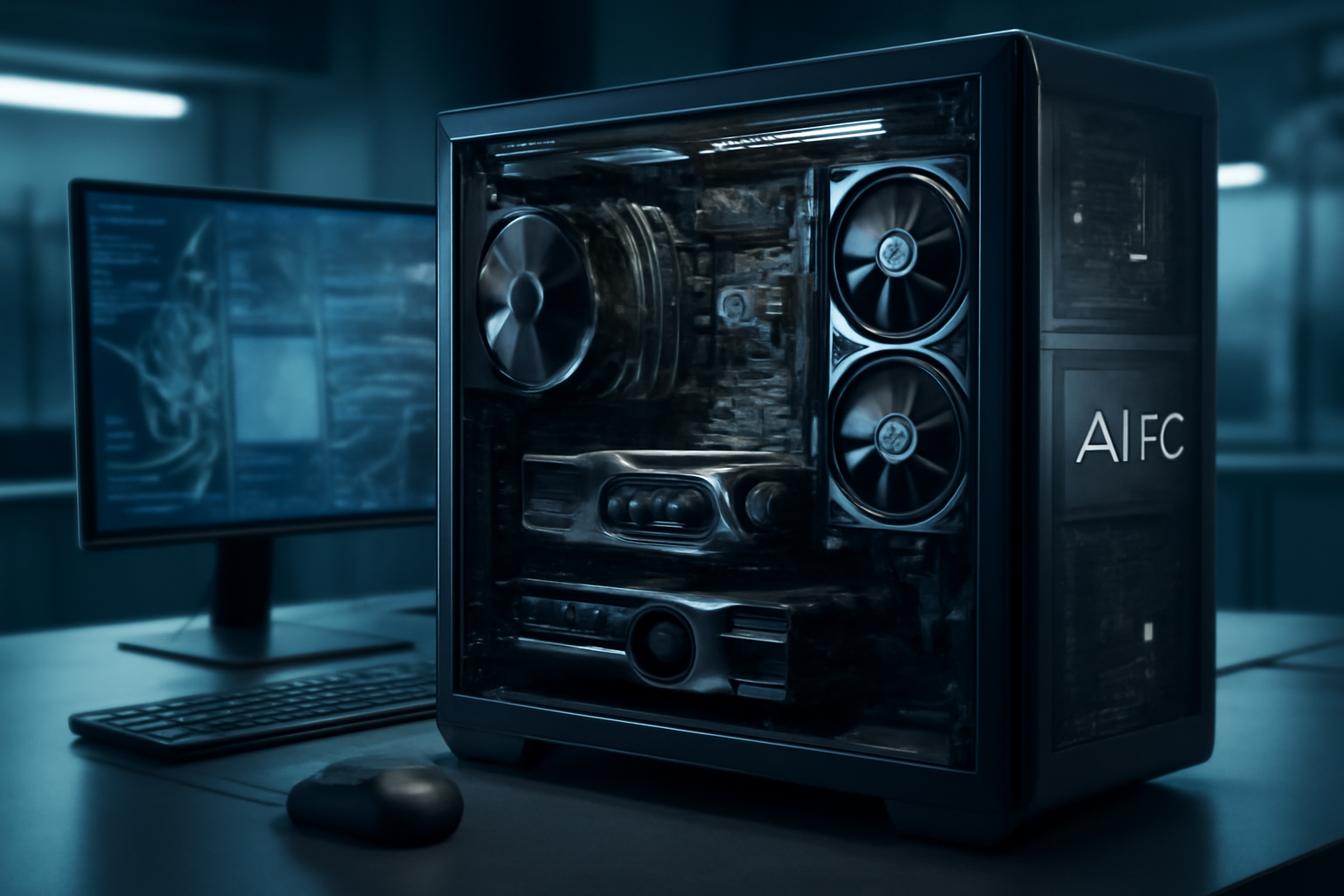What Qualifies Something as an AI Computer? Understanding the Hardware That Sets AI PCs Apart
Artificial Intelligence (AI) is no longer just a futuristic concept—it’s becoming an integral part of how we interact with technology every day. From voice assistants and smart home devices to advanced data analysis, AI is transforming the digital experience. With this shift, a new category of computers has emerged: AI PCs. But what exactly qualifies a computer as an AI PC, and how does its hardware differentiate it from a traditional, run-of-the-mill machine? In this post, we’ll explore the essential hardware components that define AI computers and why they matter.
What Is an AI PC?
An AI PC is a personal computer designed specifically to accelerate and optimize artificial intelligence workloads. Unlike standard PCs, which rely primarily on the CPU (Central Processing Unit) for processing tasks, AI PCs incorporate specialized hardware to handle complex AI computations more efficiently. This enables smoother AI-powered experiences such as real-time language translation, facial recognition, intelligent photo editing, and more.
Simply put, an AI PC is built to deliver faster, smarter, and more responsive AI applications, making it ideal for users who depend on AI-driven tools for productivity, creativity, or research.
Key Hardware Components That Define an AI PC
At the heart of what makes an AI PC stand out is its hardware — specifically designed or optimized to support AI workloads. Here are the crucial components you’ll find:
1. Dedicated AI Accelerators
While CPUs handle general computing tasks, AI workloads often demand massive parallel processing to handle neural networks and machine learning algorithms efficiently. This is where AI accelerators come into play. These are specialized chips designed to speed up AI-related computations.
- GPU (Graphics Processing Unit): Originally built for rendering graphics, GPUs excel at parallel processing. Modern AI PCs use powerful GPUs from manufacturers like NVIDIA and AMD to accelerate AI tasks such as deep learning and data analysis.
- TPU (Tensor Processing Unit): Developed by Google, TPUs are custom chips designed specifically for neural network machine learning. Although more common in data centers, some AI PCs may integrate TPU-like hardware or support external accelerators.
- Neural Processing Units (NPUs): NPUs are specialized for AI inference and training, often embedded within CPUs or SoCs (System on Chips) to deliver efficient AI acceleration at the edge.
2. Advanced CPUs with AI Enhancements
Modern CPUs increasingly incorporate AI-specific instruction sets and optimizations. For example, Intel’s latest processors include Intel Deep Learning Boost, which accelerates AI inference tasks directly on the CPU. This enables AI PCs to perform certain AI workloads without always relying on discrete GPUs or accelerators.
3. High-Speed Memory and Storage
AI computations often require rapid access to large datasets. Consequently, AI PCs are equipped with faster RAM (such as DDR5) and high-performance storage options like NVMe SSDs. This ensures smooth data flow between the processor and memory, reducing bottlenecks and improving AI processing speeds.
4. Enhanced Cooling Solutions
Running AI workloads can be resource-intensive, generating significant heat. AI PCs typically feature advanced cooling systems—liquid cooling or high-efficiency fans—to maintain optimal performance without thermal throttling.
Why Hardware Matters in AI Computing
AI workloads are computationally heavy and differ significantly from typical office or gaming tasks. Training machine learning models involves processing vast amounts of data, which demands both high throughput and efficient parallel computation. Without the right hardware, AI applications can become sluggish or unresponsive.
By integrating dedicated AI accelerators and optimized hardware, AI PCs provide:
- Faster AI Processing: Reduced latency in AI tasks means real-time responsiveness in applications like voice recognition and augmented reality.
- Energy Efficiency: Specialized chips perform AI computations more efficiently than general-purpose CPUs, conserving power and extending device longevity.
- Improved User Experience: AI-powered features such as intelligent photo sorting, natural language processing, and enhanced security run seamlessly.
Who Benefits Most from AI PCs?
AI PCs are particularly valuable for professionals and enthusiasts who rely heavily on AI-driven applications, including:
- Data Scientists and Researchers: Faster model training and inference speeds accelerate innovation.
- Creative Professionals: AI-enhanced video editing, photo retouching, and design tools become more intuitive and powerful.
- Developers: Real-time AI simulation and testing improve productivity.
- Everyday Users: Enhanced security, smarter assistants, and better multitasking improve daily computing experiences.
Conclusion
In essence, an AI computer is distinguished by its hardware architecture optimized for artificial intelligence workloads. This means incorporating specialized AI accelerators, advanced CPUs with AI optimizations, high-speed memory and storage, and efficient cooling systems. These components work together to deliver faster, more efficient, and smarter AI experiences that far outpace traditional PCs.
If you’re exploring the world of AI computing—whether for work, creativity, or personal use—understanding the hardware behind AI PCs is crucial. Investing in the right AI-capable hardware ensures you can fully leverage the power of artificial intelligence today and in the future.
For more insights on AI PCs and their impact on education and technology, check out this in-depth article from EdTech Magazine.

Leave a Reply